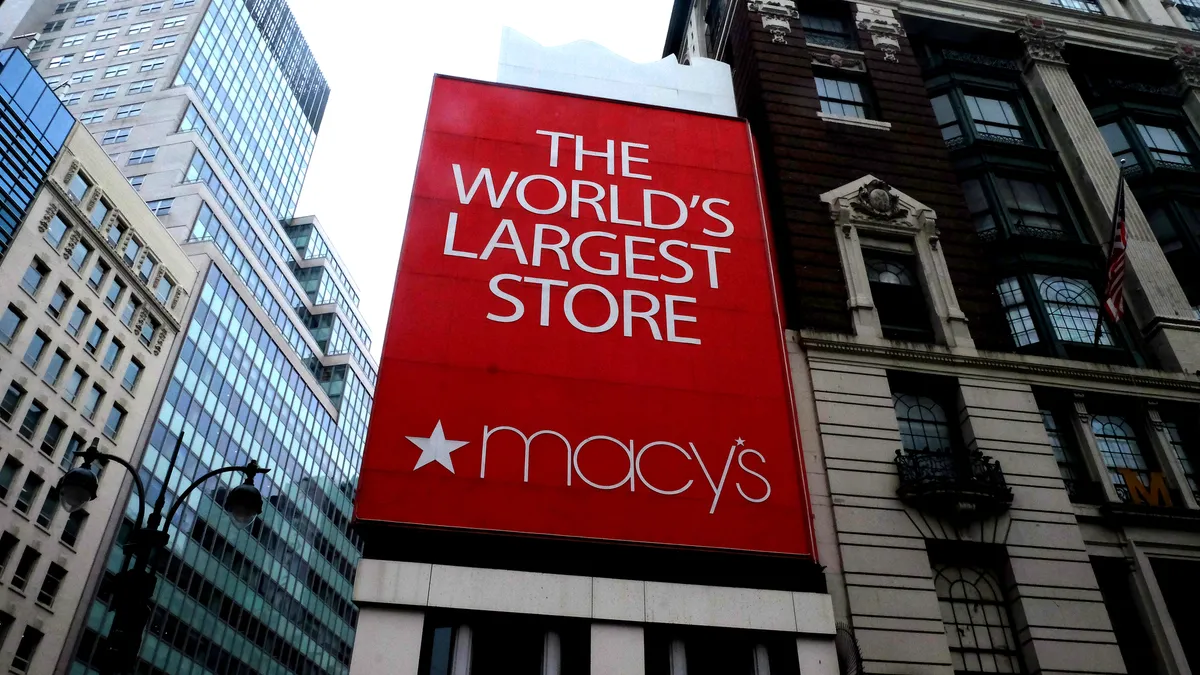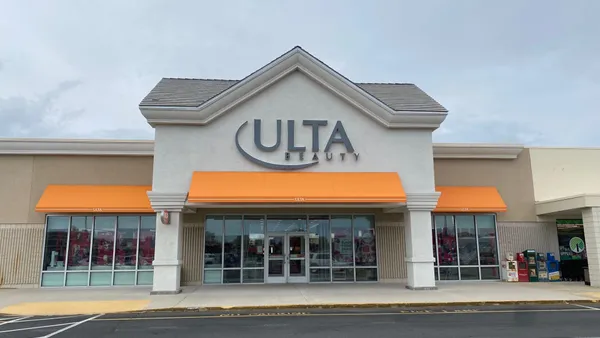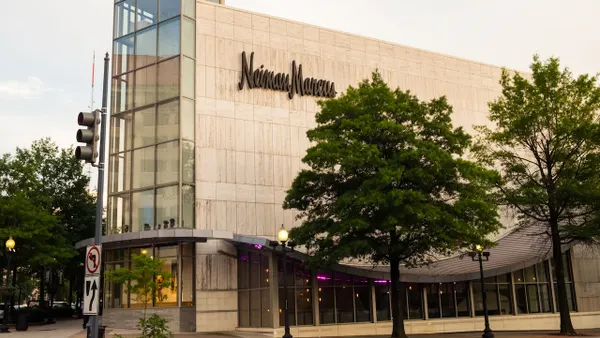After a devastating 2020 tainted by store closures and financial uncertainty, several retailers were more than ready to make headway this year.
The pandemic exposed and exacerbated several retailers' weaknesses. For much of last year, retailers were having to play catch-up with consumers' shifting shopping habits, sales declines, and for nonessential retailers, store closures. That said, Retail Dive tracked 30 major retail bankruptcies in 2020.
Any decision retailers made recently has been critical — those that can't boost their revenue may end up on the bankruptcy list. It turns out many adapted and thrived as retailers adjusted their strategies, the economy reopened and in-store traffic somewhat returned. In fact, compared to last year's 30, only eight major retailers have filed for Chapter 11 this year.
"Everyone was caught by surprise clearly and had to manage their liquidity and their inventory and deal with an unprecedented challenge," Christina Boni, senior vice president at Moody's, said in an interview. "But, as we grow further distant from those initial lockdown days, retailers have learned to operate in what can be depicted as the new normal."
The unexpected events in 2020 left retailers questioning what would happen next moving into 2021 — what new trends would pop up and whether consumers would shop in stores again. But those that used the pandemic as a moment to re-evaluate their shortcomings and avoided the "woe is me mentality" came out as winners this year, said Greg Portell, lead partner in the global consumer practice of Kearney, a strategy and management consulting firm.
"[Retailers] were a little like out-of-shape weightlifters in a sense that they were strong in the retail side of their business — the physical retail side — but weren't as strong on the digital side," he said. "So they didn't have an ability to strengthen the digital channel as well as some of the competitors were able to."
Retailers learned to be nimble in 2021, experts said. But in order to maintain growth in 2022, Portell said retailers have to be disciplined and, particularly for legacy companies, avoid relying on the same old playbook because it doesn't translate well in today's environment.
"Retail, for the past couple of years, wasn't really doing badly. Bad retailers were doing badly. And now, a lot of that undergrowth in the industry has been burnt away," Portell said. "We're not writing obituaries every day anymore. We're writing stories about exciting changes that captivate the consumer."
Retail Dive compiled a list of five retailers that have made a significant comeback after losing ground last year. Here's a look.
1. Macy's
Macy's suffered brutal losses in 2020.
Just as the company unveiled its turnaround strategy, dubbed "Polaris," it was interrupted by the pandemic. According to a Placer.ai report last summer, the retailer's foot traffic was down more than 40% every week from late June to mid-August last year, and even as its stores reopened, steep sales declines persisted throughout 2020. That fiscal year, Macy's racked up a net loss of nearly $4 billion.
In contrast, Macy's has seen its sales recover from last year's beating. Macy's second quarter sales this year rose 58.7% year over year to $5.6 billion, a little over its 2019 numbers. Following its second quarter results, S&P Global Ratings upgraded Macy's credit rating to BB- from B+.
"Their sales are responding. Their ability to focus on the consumer experience, and to try to break the traditional department store mentality is pretty impressive," Portell said about Macy's turnaround strategy. "Macy's has consistently reinforced their belief in this turnaround, often against the odds. And consumer results say it's working."
2. Foot Locker
Foot Locker was another victim of pandemic-related store closures last year. As a result, comp sales were down 5.9% and top-line sales dropped 5.7% to $7.5 billion for the fiscal year 2020. The company also suffered backlogs in U.S. ports, which complicated its ability to build inventory.
But despite lean inventory levels, Portell said Foot Locker managed to keep its supply chain moving in a way that was profitable. "The ability to do that when your stores are shutting down in a seasonal business deserves some recognition."
By the second quarter this year, the company saw a 28.2% surge in net sales from its 2019 results. The company also announced two major acquisitions in August in a move that would allow the company to expand both in the U.S. and abroad. Foot Locker acquired WSS's parent company, Eurostar, for $750 million in cash and Japanese retailer Atmos' parent company, Text Trading Company, for $360 million in cash.
3. TJX Cos.
The pandemic has permanently changed how many retailers run their business, with many bolstering their digital presence — not TJX Companies, which runs T.J. Maxx, Marshalls and other off-price businesses. TJX, like many retailers in the off-price sector, relies heavily on the treasure-hunting shopping experience. When lockdowns occurred, this was a costly decision.
Off-price retailers, as a whole, lost sales when stores temporarily closed. Last April, TJX had to furlough most of its 286,000 store and distribution center workforce. At the same time, the retailer also slashed executive pay by up to 30% from April 12 to July 4.
Thanks to pent-up demand from consumers, TJX and its banners quickly bounced back. In its most recent quarter, the company's net sales were up 23% year over year to $12.1 billion. Total segment profit reached $1.5 billion — a 29% growth from the same period in 2019.
"As you look at the first half of 2021, off-price has been very healthy in terms of the performance across the board of all the players really," said Moody's Boni.
4. Destination XL
Certain trends were clearly defined by the pandemic: Work-from-home life, postponed weddings and canceled in-person events. These trends had been a thorn on the side for big-and-tall men's apparel retailer Destination XL, which lost nearly a third of its sales in 2020. S&P Global Market Intelligence even added Destination XL to its list of most vulnerable publicly traded retailers last August, with a 15.4% default probability.
Its recent second quarter results now tell a different story. Sales increased 81.3% from 2020 and 12.5% from 2019. Net income for the quarter totaled $24.5 million. It was a result Destination XL President and CEO Harvey Kanter said "far surpassed" their expectations, according to a press release.
By September this year, Destination XL officially left S&P Global Market Intelligence's top 15 list of most vulnerable retailers.
As consumers begin attending formal events and weddings again, suits and dress shirts are seeing more demand. Kanter said Destination XL's 12-month active customer file is almost back up to pre-pandemic levels, while its Q2 new-to-file rate is up 29% from 2019. "Many of our existing customers have returned to shop after months of staying close to home, and many new customers are discovering DXL for the first time," Kanter said in a statement.
5. Kohl's
Despite the uncertainty of the pandemic, which caused store closures and revenue to decline 23.1% year over year in Q2 last year, executives at Kohl's remained optimistic. CEO Michelle Gass even said Kohl's was poised to gain market share.
Kohl's continued to make strategic decisions, despite the issues caused by the pandemic. The retailer launched an athleisure private label in October last year, dubbed FLX, in an attempt to become a destination for active and casual lifestyle products. In December, Kohl's and Sephora announced plans to establish at least 850 Sephora shop-in-shop locations within Kohl's by 2023.
As customer traffic improved, revenue rose 30.5% to $4.4 billion in Kohl's most recent quarter and its net income rose to $382 million from $47 million around the same time last year. Company executives also hinted that they plan on making several partnerships that would continue to drive sustainable growth.















